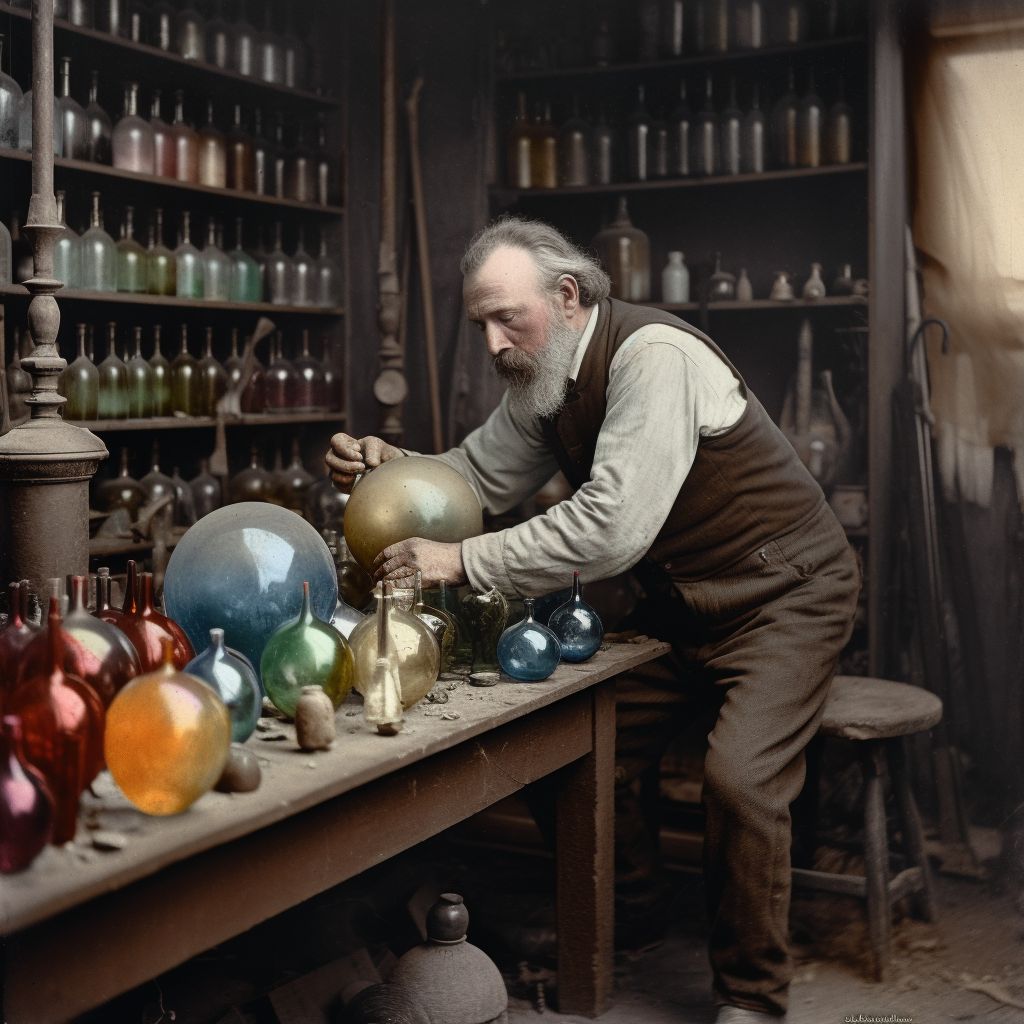Glassblower
In the late 19th century, glassblowing remains a highly respected and important craft within the United States. Glassblowers, also known as glass artisans, are skilled individuals who work with molten glass to create various objects, ranging from decorative pieces to functional items. This ancient art form has persisted through the centuries and continues to be a vital trade in the modern era.
Process of Glassblowing
Glassblowing involves the manipulation of molten glass, which is heated in a furnace to a temperature of approximately 2,400 degrees Fahrenheit. The glassblower uses a blowpipe to gather a small amount of molten glass, which is then rolled and shaped with specialized tools. By introducing air into the blowpipe, the artisan can create a bubble within the molten glass, allowing for the formation of various shapes and forms.
Once the desired shape has been achieved, the glass object is slowly cooled in a process known as annealing, which helps to relieve any internal stresses and prevent the glass from cracking. The final product can be further refined by adding decorative elements, such as etching or enameling, to create unique and intricate designs.
Role of Glassblowers
Glassblowers create a wide variety of items, including vases, drinking glasses, ornaments, and scientific apparatuses. Many glassblowers specialize in specific areas, such as creating stained glass for architectural applications or producing fine glassware for household use. The craft requires a high level of skill and expertise, as well as an artistic eye for detail and design.
Training and Apprenticeships
Aspiring glassblowers typically undergo a period of apprenticeship, working alongside experienced artisans to learn the necessary techniques and skills. This hands-on training provides valuable experience in handling molten glass, understanding the properties of the material, and mastering the techniques required to create beautiful and functional objects. Apprenticeships can last several years, during which time the apprentice gradually gains more responsibility and independence in the workshop.
Demand and Market
In the late 19th century, the demand for glass products remains strong, driven by both practical needs and the appreciation of artistry. Glassblowers are able to command respectable wages, and their skills are highly sought after by various industries and collectors. With the continued growth of urban centers and the increasing use of glass in architecture, glassblowing is expected to remain a vital trade in the years to come.
In conclusion, glassblowing is a time-honored craft that continues to thrive in the late 19th century. The dedication and skill of glassblowers have allowed this ancient art form to persist, producing exquisite objects that are both functional and visually stunning. The future of this trade is bright, as the demand for glass products and the appreciation for the craft continue to grow.
Type
Artisan

